
The Hawker Harrier was an experimental biplane torpedo bomber aircraft built by Hawker Aircraft to a specification issued in the 1920s for the RAF.

The Gloster F.5/34 was a British fighter of the 1930s. It was a single-seat, single-engine monoplane of all-metal cantilever construction; the undercarriage was of the tailwheel type with retractable main wheels.
The Hawker P.V.3 was a British single-engined biplane fighter prototype of the 1930s. Only a single example was built, the Gloster Gladiator being selected instead to fulfill the requirement to which it was designed.
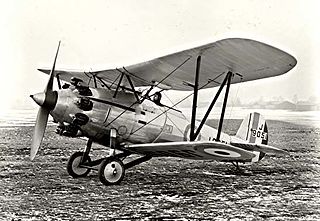
The Bristol Type 107 Bullpup was a British fighter aircraft built in the 1920s. It was not selected for squadron service and only the single prototype was built

The Westland Interceptor was a fighter developed by the British company Westland Aircraft to Air Ministry Specification F.20/27. When tested in 1929 and 1930, it showed unsatisfactory handling characteristics and was rejected by the RAF in favour of the Hawker Fury biplane fighter.
The Blackburn F.1 Turcock was a British single-seat single-engine biplane fighter built in 1927. Designed to be produced in several variants, only one was completed.

The Blackburn B.T.1 Beagle was a British single-engine, two-seat biplane bomber/torpedo aircraft from 1928. Designed to Air Ministry specifications which led to no contracts for any manufacturer, only one Beagle was built.

The Gloster Goring was a single-engined two-seat biplane designed to meet 1926 Air Ministry specifications for a day/torpedo bomber. It was not put into production and the one aircraft built served later as an engine testbed.
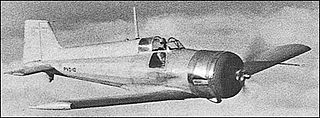
The Vickers Type 279 Venom was a British low-wing monoplane single-seat, single-engined, eight-gun fighter aircraft. It was fast and manoeuvrable but its Bristol Aquila radial engine was underpowered. Together with other designs built to the same specification, which included the Bristol Type 146, Gloster F.5/34, and Martin-Baker MB 2, it was rejected by the Air Ministry and only one Venom was built.
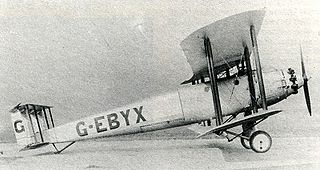
The Vickers Vellore was a large biplane designed as a freight and mail carrier, in single-engined and twin-engined versions, which saw limited use as freighters and long-range experimental aircraft. A final variant with a broader fuselage, the Vellox, was built as an airliner.

The Vickers Type 151 Jockey was an experimental low-wing monoplane interceptor fighter powered by a radial engine. It was later modified into the Type 171 Jockey II, which had a more powerful engine and detail improvements. Only one was built; it was lost before its development was complete, but the knowledge gained enabled Vickers to produce the more refined Venom.

The Vickers Type 161 was an unusual 1930s pusher biplane interceptor, designed to attack aircraft from below with a single upward-angle large calibre gun. The aircraft flew well but the concept was abandoned and only one was built.

The Vickers Type 253 was a single-engined two-seat biplane general-purpose military machine built to a 1930 government specification. It won a production contract, but this was transferred to the same company's monoplane equivalent, the Wellesley. Only one Type 253 was built.
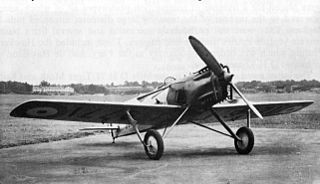
The de Havilland DH.77 was a prototype British fighter aircraft of the late 1920s. Intended as a fast climbing interceptor for Britain's Royal Air Force, the DH.77 was a lightweight low-wing monoplane powered by a relatively low power engine. Despite excellent performance, only one aircraft was built, the Hawker Fury biplane being preferred.
The Fairey S.9/30 was a two-seat, single-engined biplane built to meet an Air Ministry specification for a fleet reconnaissance aircraft. It flew during 1934-6 in both land- and seaplane configurations. Although only one was built, it was the progenitor of the Fairey Swordfish.

The Fairey Ferret was a 1930s British general-purpose biplane designed and built by the Fairey Aviation Company. It performed well in trials but was not ordered into production.
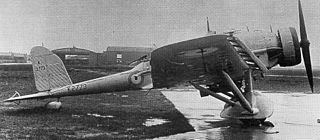
The Handley Page H.P.47 was a British single-engined low-wing monoplane built to an Air Ministry specification for a general-purpose bomber and torpedo bomber aircraft. Only one was built.
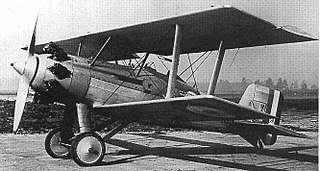
The Boulton & Paul P.33 Partridge was a single seat single-engined biplane fighter designed to an Air Ministry specification. One prototype was ordered and built for trials in 1928, but it was not put into production.

The Parnall Pipit was a single-engined, single-seat naval fighter designed to an Air Ministry specification in 1927. Two prototypes were built but both were destroyed by tail flutter.
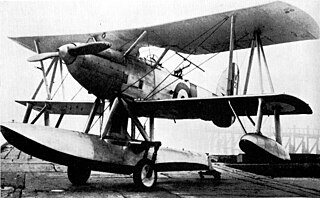
The Short Gurnard was a single-engined two-seat biplane naval fighter, built in the United Kingdom to an Air Ministry specification in 1929. It failed to win production orders and only two flew.

















